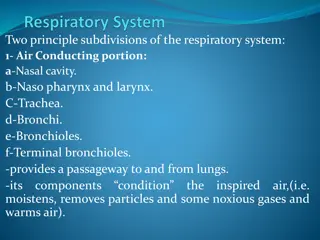Effective HIIT Workout Strategies for Cardio-Respiratory Fitness
Utilize timed interval workouts, longer work interval sessions, and longer rest interval routines to boost cardio-respiratory fitness through high-intensity interval training (HIIT). Enhance efficiency, endurance, and speed while reducing the risk of overuse injuries. Interval training increases aerobic and anaerobic capacity, improves performance, and prevents exercise monotony.
Download Presentation

Please find below an Image/Link to download the presentation.
The content on the website is provided AS IS for your information and personal use only. It may not be sold, licensed, or shared on other websites without obtaining consent from the author.If you encounter any issues during the download, it is possible that the publisher has removed the file from their server.
You are allowed to download the files provided on this website for personal or commercial use, subject to the condition that they are used lawfully. All files are the property of their respective owners.
The content on the website is provided AS IS for your information and personal use only. It may not be sold, licensed, or shared on other websites without obtaining consent from the author.
E N D
Presentation Transcript
HIIT: High Intensity Interval Training LEQ: CAN I CREATE AND PERFORM MY OWN HIIT WORKOUT TO IMPROVE CARDIO- RESPIRATORY FITNESS?
DO ANYWHERE TIMED INTERVAL WORKOUT HIGH-INTENSITY EFFORT 1 minute 2 minutes 3 minutes 4 minutes 3 minutes 2 minutes 1 minute RECOVERY PHASE 1 minute 2 minutes 3 minutes 4 minutes 3 minutes 2 minutes 1 minute Use any cardio activity to perform the timed interval workout like running, walking, cycling, swimming, rowing, jumping rope, elliptical, stair climber
LONGER WORK INTERVAL WORKOUT HIGH-INTENSITY EFFORT 400m RECOVERY PHASE 200m Use a cardio activity to perform the timed interval workout like running, walking, cycling, swimming, or rowing. Complete 5-10 reps of each interval depending on ability & goals Be sure to properly warm-up and cool down!
LONGER REST INTERVAL WORKOUT HIGH-INTENSITY EFFORT 30 seconds RECOVERY PHASE 1 minute Use a cardio activity to perform the timed interval workout like running, walking, cycling, swimming, or rowing. Complete 5-10 reps of each interval depending on ability & goals Be sure to properly warm-up and cool down!
BENEFITS OF INTERVAL TRAINING Increases cardio-respiratory efficiency and ability to deliver oxygen to working muscles Increases tolerance to lactic acid build up in the muscles Improved performance, greater speed, and better endurance Reduces risk of injuries associated with overuse Increases training intensity without overtraining or burnout
REFLECTION 1. IS INTERVAL TRAINING AEROBIC OR ANAEROBIC? 2. HOW DOES INTERVAL TRAINING REDUCE EXERCISE BOREDOM?























